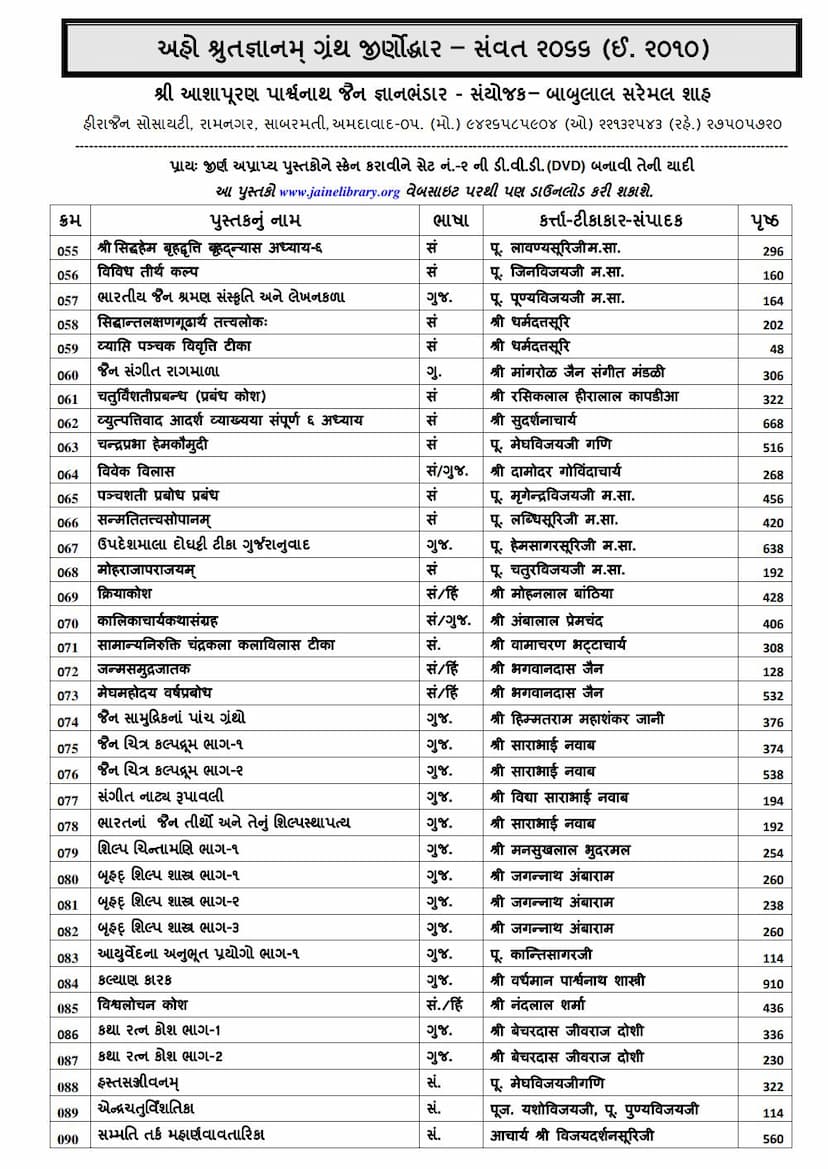Jain Sangit Ragmala
Added to library: September 2, 2025

Summary
Here's a comprehensive summary of the Jain text "Jain Sangit Ragmala" based on the provided pages:
Book Title: Jain Sangit Ragmala (Jain Musical Garland of Ragas) Author/Compiler: Mangrol Jain Sangit Mandali Publisher: Mangrol Jain Sangit Mandali Year of Publication: First Edition published in Sambat 1851 (1895 CE)
Overview:
"Jain Sangit Ragmala" is a significant Jain religious text compiled by the Mangrol Jain Sangit Mandali. It is essentially a collection of devotional songs, hymns (stavan), and verses dedicated to various Jain Tirthankaras and other important figures. The primary purpose of this book is to facilitate devotional singing (bhajan and kirtan) within the Jain tradition, particularly for those interested in learning classical Indian music for religious purposes.
Key Features and Content:
- Musical Education and Devotion: The book aims to provide a structured approach to learning and performing Jain devotional music. It emphasizes the harmony between spiritual devotion and musical expression.
- Harmonium Guide and Notation: A notable aspect is the inclusion of a "Harmonium Guide" that explains how to play stavan compositions on the harmonium. It provides guidance on understanding musical notes (swaras), scales (ragas and raginis), and their application in devotional singing. This suggests a focus on making Jain devotional music accessible to a wider audience, even those learning musical instruments.
- Compilation of Stavan: The core of the book is a vast collection of stavan, which are devotional songs praising the virtues and glory of Jain Tirthankaras. Each stavan is presented with:
- Title of the Composition (Pad): A unique number and name for each piece.
- Subject (Stavan Vishay): The Tirthankara or spiritual concept being praised.
- Raga (Raag Naam): The specific Indian classical raga to be used for singing the stavan. This is crucial for understanding the mood and melodic structure of the composition.
- Tala (Taal Naam): The rhythmic cycle to be followed.
- Page Number: Indicating where the full composition can be found.
- Harmonium Notation: The pages show what appears to be musical notation specifically for the harmonium, indicated by letters corresponding to musical notes (Sa, Ri, Ga, Ma, Pa, Dha, Ni).
- Bhaktamar Stotra: A significant portion of the book is dedicated to the highly revered Bhaktamar Stotra of Acharya Mandutung Suri. It includes the original Sanskrit verses, their Gujarati translation, and stavan (devotional songs) based on the stotra. This section is extensive, featuring stavan for each of the 48 verses of the Bhaktamar Stotra.
- Chaitra Vandan & Ashtaka: The text also includes devotional compositions known as Chaitra Vandan (salutations to auspicious representations of Tirthankaras) and Ashtaka (groups of eight verses) dedicated to specific Tirthankaras like Shitalnath and Parshvanath.
- Spiritual Teachings (Atmobodh): Interspersed within the musical pieces are stavan that convey spiritual wisdom and self-reflection, referred to as "Atmobodh" (self-knowledge). These verses encourage introspection on the transient nature of life, the pursuit of true happiness, and detachment from worldly pleasures.
- Structure and Organization: The book is meticulously organized with an index (Anukramanika) listing the stavan by their titles, subjects, ragas, and page numbers. It also includes explanations of musical concepts like Sargam (musical scales), the ten defects in singing (Dash Dosh), and the characteristics of different ragas.
- Dedication and Acknowledgements: The book is dedicated to Jain scholars and patrons, highlighting the efforts of individuals and organizations in preserving and propagating Jain religious music. It acknowledges the financial and intellectual support received.
- Erratum (Shuddhi Patrika): A page for corrections indicates a commitment to accuracy and acknowledges that errors might have occurred during the printing process.
- Practical Guidance: The "Suchana" (Information) section provides practical advice on how to learn the music, emphasizing memorizing the musical notes and practicing with the harmonium guide.
Significance:
"Jain Sangit Ragmala" serves as a valuable resource for the study and practice of Jain devotional music. It bridges the gap between classical Indian music and Jain spirituality, making religious hymns more accessible and engaging. The inclusion of harmonium notation and practical guidance makes it particularly useful for aspiring singers and musicians within the Jain community. The comprehensive collection of stavan for various Tirthankaras highlights the rich musical heritage of Jainism. The publication represents a significant effort to document and disseminate traditional Jain devotional music for educational and religious purposes.